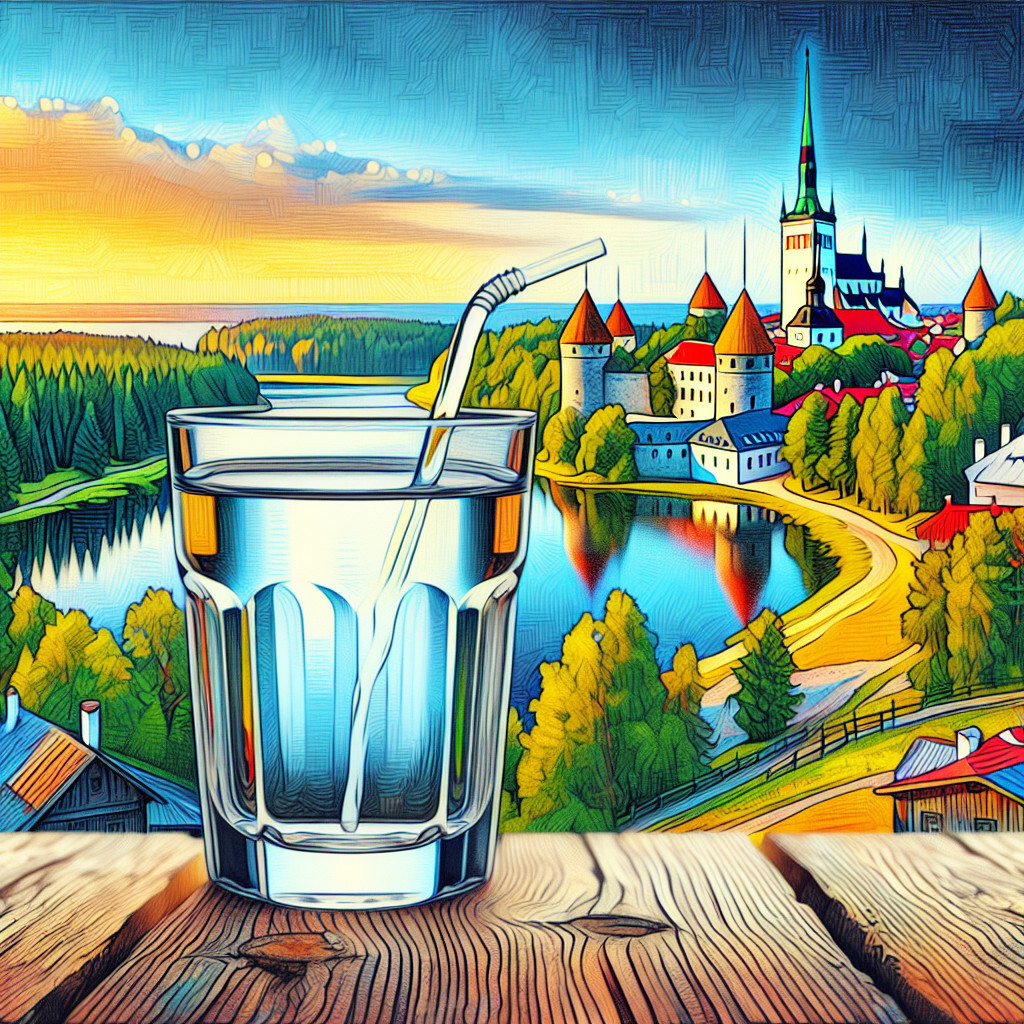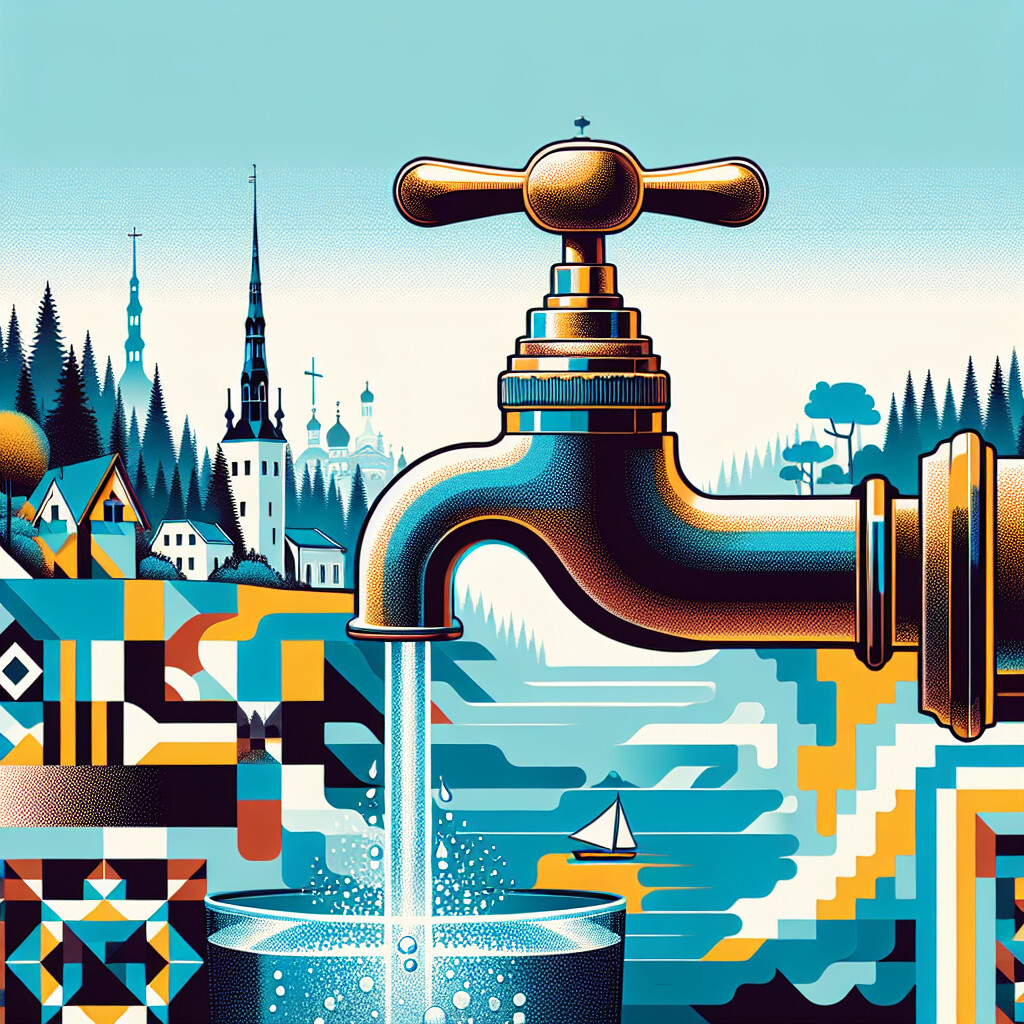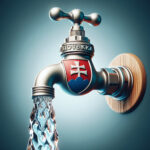-
Table of Contents
“Estonia’s Tap Water: Pure, Clean, and Safe to Drink!”
Introduction

The tap water in Estonia is generally of high quality and safe to drink. The country’s water supply system is well-maintained and regulated, ensuring that the water meets or exceeds European Union standards for potability. The water comes from both ground and surface sources, and is treated to remove any harmful substances. However, the taste and hardness of the water can vary depending on the region, with some areas having a higher mineral content than others.
Understanding the Quality of Tap Water in Estonia
Estonia, a small country nestled in the northern part of Europe, is known for its rich history, stunning landscapes, and advanced digital society. However, one aspect that often goes unnoticed is the quality of its tap water. The tap water in Estonia is not only safe to drink but also meets the high standards set by the European Union. This article aims to provide an in-depth understanding of the quality of tap water in Estonia.
Estonia’s tap water quality is primarily determined by its source. The country’s water supply is predominantly sourced from groundwater, which accounts for approximately 90% of the total supply. This water is naturally filtered through layers of sand and gravel, which significantly reduces the presence of harmful substances. The remaining 10% is derived from surface water sources such as lakes and rivers.
The quality of tap water in Estonia is rigorously monitored and controlled. The Estonian Health Board is responsible for ensuring that the water supplied to households meets the stringent safety standards set by the European Union. Regular tests are conducted to check for the presence of harmful substances such as heavy metals, pesticides, and bacteria. The results of these tests are publicly available, providing transparency and reassurance to the public about the safety of their tap water.
Despite the high quality of tap water, it is not uncommon for Estonians to prefer bottled water. This preference is largely due to the taste of the tap water, which can vary depending on the region. In areas where the water is hard, meaning it has a high mineral content, the water can have a distinct taste that some people find unpalatable. However, it’s important to note that this does not indicate a lower quality of water. In fact, hard water is often considered healthier due to its higher mineral content.
While the tap water in Estonia is generally safe to drink, there are instances where caution is advised. In some rural areas, the water supply may come from private wells which are not subject to the same rigorous testing as the public water supply. In these cases, it is recommended to have the water tested regularly to ensure its safety. Additionally, older buildings may have plumbing systems that contain lead, which can leach into the water and pose a health risk. Therefore, it is advisable to let the tap run for a few minutes before using the water for drinking or cooking in such buildings.
In conclusion, the tap water in Estonia is of high quality and safe to drink, thanks to the country’s abundant groundwater sources and stringent monitoring processes. However, taste preferences and specific circumstances such as living in rural areas or older buildings may necessitate additional precautions. As a visitor or resident, it’s always a good idea to stay informed about the local water supply and take necessary measures to ensure the water you consume is safe.
The Role of Environmental Policies in Maintaining Estonia’s Tap Water
Estonia, a small country nestled in the Baltic region of Northern Europe, is renowned for its pristine natural environment, which includes vast forests, picturesque lakes, and a diverse array of wildlife. This commitment to environmental preservation extends to the country’s tap water, which is considered among the cleanest and safest in the world. The quality of Estonia’s tap water is largely attributable to the country’s stringent environmental policies, which prioritize the protection of natural resources and the promotion of sustainable practices.
Estonia’s environmental policies are rooted in the principle of sustainable development, which seeks to balance economic growth with environmental protection. This approach is reflected in the country’s water management strategies, which aim to ensure the long-term availability and quality of water resources. These strategies encompass a wide range of measures, from the regulation of water extraction and use to the implementation of advanced water treatment technologies.
One of the key aspects of Estonia’s water management is the regulation of water extraction. The country has established strict limits on the amount of water that can be extracted from natural sources, such as rivers, lakes, and groundwater reserves. This is designed to prevent over-extraction, which can lead to water scarcity and degradation of water quality. Moreover, the extraction of water is closely monitored to ensure compliance with these limits and to detect any signs of contamination at an early stage.
In addition to regulating water extraction, Estonia has also invested heavily in water treatment technologies. The country’s water treatment plants are equipped with state-of-the-art technology that can effectively remove a wide range of contaminants, including bacteria, viruses, and chemical pollutants. This ensures that the tap water is not only safe to drink but also meets the highest standards of taste and clarity.
Furthermore, Estonia’s environmental policies also emphasize the importance of public participation in water management. The country encourages its citizens to play an active role in protecting water resources, for instance, by using water efficiently and responsibly. Public awareness campaigns are regularly conducted to educate people about the importance of water conservation and the impact of their water use habits on the environment.
Estonia’s commitment to environmental protection is also reflected in its approach to wastewater management. The country has implemented stringent regulations to ensure that wastewater is properly treated before it is discharged into the environment. This not only prevents pollution of water bodies but also helps to preserve the quality of the country’s water resources.
In conclusion, the quality of Estonia’s tap water is a testament to the country’s robust environmental policies. These policies, which encompass a wide range of measures from water extraction regulation to advanced water treatment, have ensured that Estonia’s tap water remains clean and safe for consumption. Moreover, by promoting sustainable practices and public participation, these policies have also helped to foster a culture of environmental responsibility among Estonia’s citizens. As a result, Estonia stands as a shining example of how environmental policies can play a pivotal role in maintaining the quality of tap water.
Health Implications of Drinking Tap Water in Estonia
Estonia, a small country nestled in the Baltic region of Northern Europe, is known for its advanced digital society, rich history, and beautiful landscapes. However, one aspect that often goes unnoticed is the quality of its tap water. The health implications of drinking tap water in Estonia are a topic of interest for both residents and visitors alike.
Estonia’s tap water quality is generally considered safe for consumption, thanks to the country’s stringent water quality regulations and regular monitoring. The country’s water supply primarily comes from groundwater sources, which are naturally filtered and typically contain fewer contaminants than surface water. This natural filtration process, coupled with modern water treatment methods, ensures that the tap water meets the European Union’s strict drinking water standards.
However, it’s important to note that the quality of tap water can vary depending on the location within Estonia. In urban areas like Tallinn, the capital city, tap water is usually of high quality due to advanced water treatment facilities. On the other hand, in some rural areas, the tap water may contain higher levels of certain minerals due to the local geology.
One of the primary health concerns related to drinking tap water in Estonia is the presence of iron and manganese. These minerals are naturally occurring in the groundwater and can sometimes exceed the recommended levels, especially in rural areas. While these minerals are not harmful in small amounts, high concentrations can cause health issues such as digestive problems and neurological disorders.
Another concern is the presence of nitrate, particularly in areas with intensive agriculture. Nitrates can seep into the groundwater from fertilizers and animal waste, posing a risk to human health. High levels of nitrate in drinking water can cause methemoglobinemia, a condition that reduces the blood’s ability to carry oxygen, particularly in infants.
Despite these potential risks, it’s important to remember that the overall quality of tap water in Estonia is generally good. The country’s water suppliers are required to regularly test the water for a range of contaminants, including bacteria, viruses, chemicals, and heavy metals. If any contaminants are detected above the safe levels, the water supplier must take immediate action to rectify the situation and inform the public.
Furthermore, Estonia has been making significant efforts to improve its water infrastructure, particularly in rural areas. These improvements include upgrading water treatment facilities and replacing old pipes, which can sometimes leach contaminants into the water. These efforts are helping to ensure that all residents of Estonia have access to safe, clean drinking water.
In conclusion, while there are some health implications associated with drinking tap water in Estonia, the overall risk is relatively low, especially in urban areas. However, individuals living in or visiting rural areas may want to consider using a water filter or drinking bottled water, particularly if they have a sensitive digestive system or other health concerns. As always, when in doubt about the safety of the water, it’s best to seek advice from a local health authority or water supplier.
Comparative Analysis: Tap Water in Estonia vs. Other European Countries
Estonia, a small yet vibrant country in Northern Europe, is known for its rich history, stunning landscapes, and advanced digital society. However, one aspect that often goes unnoticed is the quality of its tap water. When compared to other European countries, Estonia’s tap water stands out for its exceptional quality and safety standards.
Estonia’s tap water is sourced primarily from groundwater, which accounts for approximately 90% of the country’s drinking water. This water is naturally filtered through layers of sand and gravel, which helps to remove impurities and maintain its high quality. The remaining 10% is sourced from surface water bodies such as lakes and rivers. Regardless of the source, all tap water in Estonia undergoes rigorous testing and treatment to ensure it meets the stringent safety standards set by the European Union.
In comparison to other European countries, Estonia’s tap water is often considered superior. For instance, in countries like Spain and Italy, locals and tourists alike are often advised to avoid drinking tap water due to concerns about its quality. In contrast, Estonia’s tap water is not only safe to drink but is also often praised for its clean, fresh taste.
This is not to say that all European countries have poor-quality tap water. Countries like Austria, Switzerland, and Denmark are also known for their high-quality tap water. However, what sets Estonia apart is its commitment to maintaining and improving its water infrastructure. The country has invested heavily in modernizing its water treatment facilities and distribution networks, ensuring that clean, safe water is accessible to all residents.
Moreover, Estonia’s approach to water management is also noteworthy. The country has implemented stringent regulations to protect its water sources from pollution and over-extraction. It also promotes water conservation and efficient use among its citizens. These efforts have not only helped to maintain the quality of Estonia’s tap water but have also contributed to its sustainability.
Another factor that contributes to the high quality of Estonia’s tap water is the country’s relatively low population density. With fewer people and industries to pollute the water sources, the risk of contamination is significantly reduced. This is in stark contrast to more densely populated European countries, where industrial activities and urban runoff can pose significant threats to water quality.
In conclusion, the tap water in Estonia is of exceptional quality, thanks to the country’s abundant groundwater sources, modern water infrastructure, stringent regulations, and low population density. While other European countries also have high-quality tap water, Estonia’s commitment to maintaining and improving its water quality sets it apart. So, whether you’re a resident or a visitor, you can drink Estonia’s tap water with confidence, knowing that it is not only safe but also among the best in Europe.
Q&A
1. Question: Is tap water in Estonia safe to drink?
Answer: Yes, tap water in Estonia is generally safe to drink.
2. Question: How is the quality of tap water in Estonia?
Answer: The quality of tap water in Estonia is high, as it is sourced from well-protected underground water bodies.
3. Question: Does the tap water in Estonia need to be boiled before drinking?
Answer: No, tap water in Estonia does not need to be boiled before drinking as it is already treated and safe for consumption.
4. Question: What does the tap water in Estonia taste like?
Answer: The tap water in Estonia is often described as having a clean and fresh taste, with no significant aftertaste.
Conclusion
The tap water in Estonia is generally safe and clean to drink, meeting high quality standards. However, the taste can vary depending on the region due to different mineral compositions.






